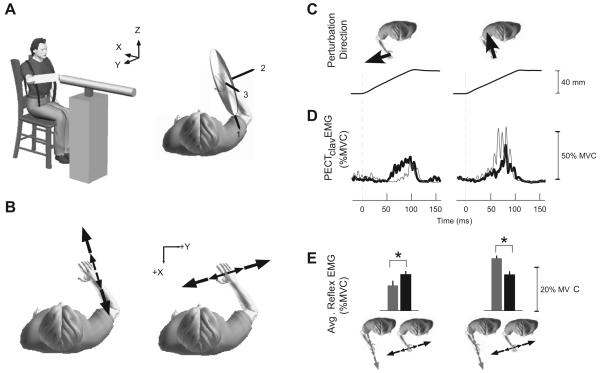Figure 4.
Experiments demonstrating how stretch reflexes adapt to compensate for changes in the mechanical properties of the environment with which a subject interacts. (A) Robot used to estimate arm impedance and the corresponding estimate from a single subject. (B) Orientation of the unstable haptic environments used for this same subject. These environments were oriented along the primary and secondary axes of endpoint stiffness, as indicated in A. (C) Ramp-and-hold perturbations used to elicit stretch reflexes as subjects interacted with each of the environments shown in B. (D) reflex EMGs recorded from the clavicular head of the pectoralis (PECTclav). EMGs were elicited by the perturbation directions shown above each set of traces. The light gray traces correspond to reflexes elicited during interactions with the haptic environment aligned to the direction of maximal endpoint stiffness. Black traces correspond to reflexes elicited during interactions with the orthogonal environment (see corresponding directions shown in E). (E) Group results (N=5 subjects) comparing reflex EMGs in each environment. Comparisons were made only at matched levels of background muscle activity. Colors correspond the environments shown at the bottom of the figure. See (Krutky et al. 2010) for more details.

